england
channa aka snakehead
- Joined
- Dec 13, 2005
- Messages
- 10,394
- Reaction score
- 3
Common Name: ornate snakehead/blue snakehead/burmese spotted snakehead
Scientific Name: Channa ornatipinnis
Family: Channidae
Origin: Southern Irrawaddy and Sitang River basins Myanmar
Maximum Size: 30cm/12inches....Reports of bigger have been heard
Care: Temperature: sub tropical around 18c-25c
Tank mate: Very aggresive, will not tolerate members of its own kind in small spaces , although a dwarf species requires a very large well structured tank to house a group which this way you will be virtually guaranteed a pair, as they start to mature they will go through a stage where lots of scraping very well may occur, once through this and a pair is formed, it's advisable to remove the rest before spawning occurs and deaths may well happen...
Feeding: I fed mine on dried mealworms and chopped prawns. They don't need live fish, and do perfectly well on robust live foods (earthworms, river shrimps, mealworms) or chunky frozen foods.
Sexing: Males have a much bulkier head and more stocky compared to female
Breeding: Set up a heavily planted tank with lots of bogwood/rocks for hiding places. In the wild they’re always found one ornatipinnis to one rock. Floating plant's recommended & I went for the cheap version<plastic>
Set tank up, if room temp iss warm there will be no need for a heater even in winter. Having a strong current is good. My Juwel filter is aimed at the floor via an angle so there's a current running through the tank but the surface is like a mill pond...once a pair has formed just leave them to get on with it. Do not change any water as these guys actually do not like lots of water changes. You should notice head to tail with fins exposed and sometimes they will wrap themselves up in funny situations, also performing what is known as "mock spawning". I call this the wrap and drop because they wrap into a ball up at the surface then drop as one towards the floor. If you see this you should be like this:
They lay the eggs whilst dropping towards the floor and the eggs will float to the suface where upon after the male will move the eggs into a "nest" where he will protect them even from the female. They are brilliant parents. My first spawn have sucsessfully been reared. He will take the eggs into his mouth and clean then spit them back to the group via his gills, <hatch in around two days>. He does this with them even when they’re free swimming. At this time both parents will protect the fry. Once free swimming, it's plain sailing from there. Feed with either fresh hatched brineshrimp eggs or a good thing I found on ebay "deshelled brineshrimp eggs". You just feed straight to them. Mine were solely fed on this.
CLICK ON PICTURE'S FOR BIGGER VERSION'S
The tank

The happy parent's at the time
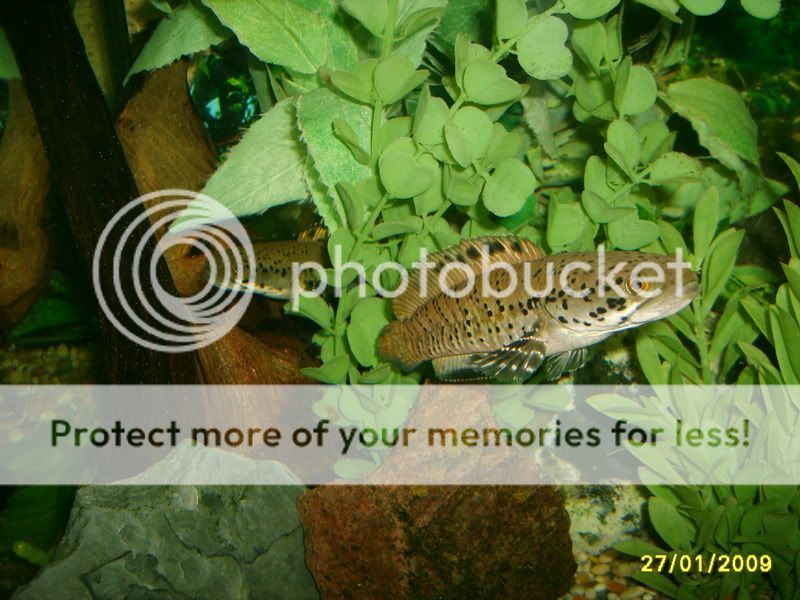
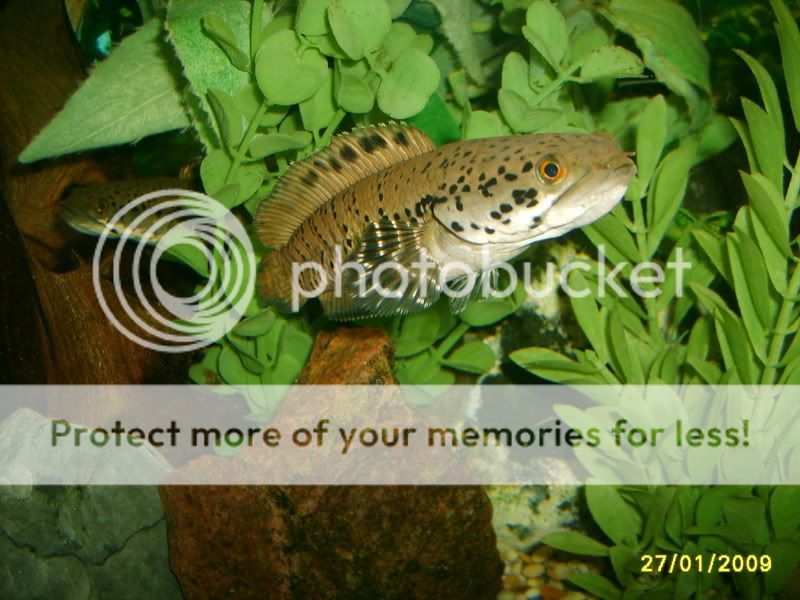
The egg's in the nest
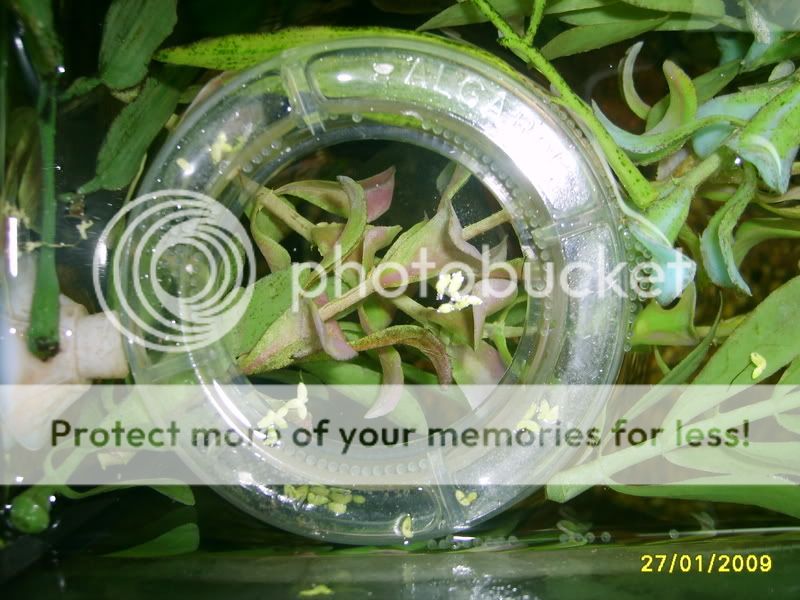
here notice the egg's floating around prior to collecting them up

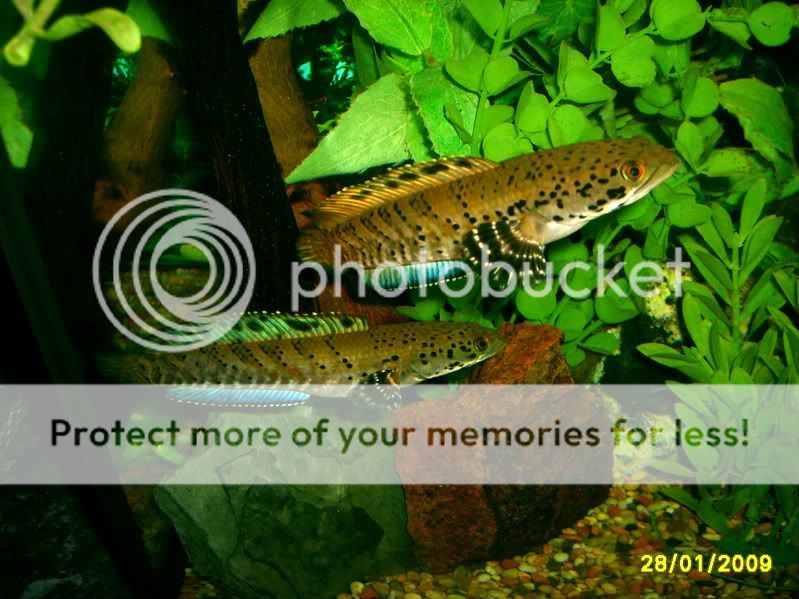
after two day's....egg's with tail's

free swimming and eating
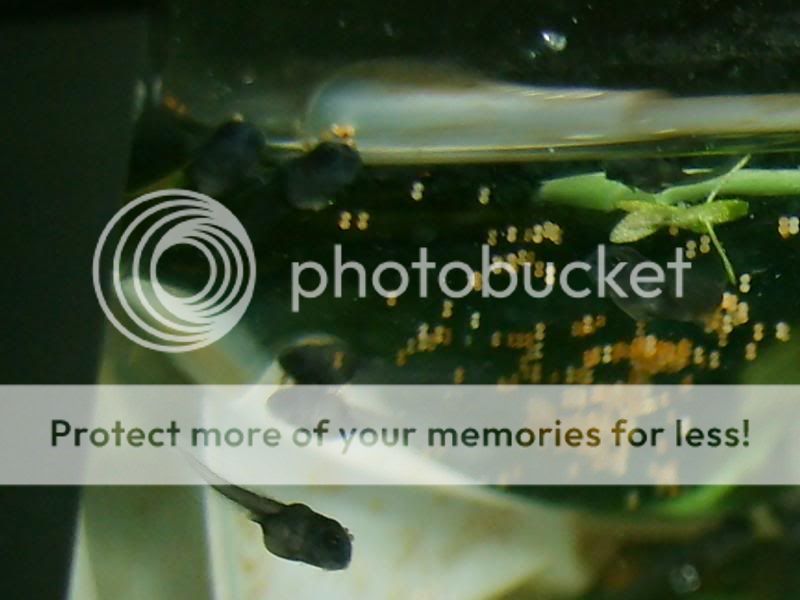
See the caring side of the ornatipinnis
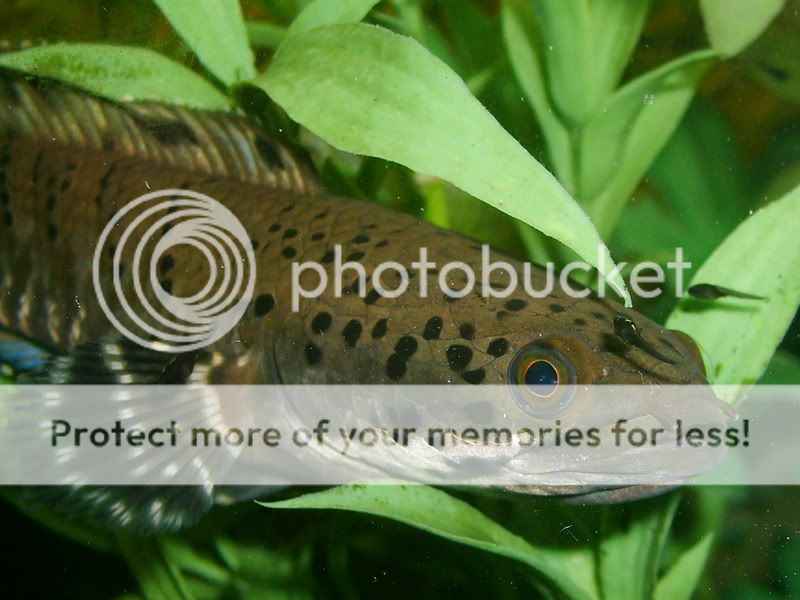
fry with babie colour's black with a gremlin stripe across the top
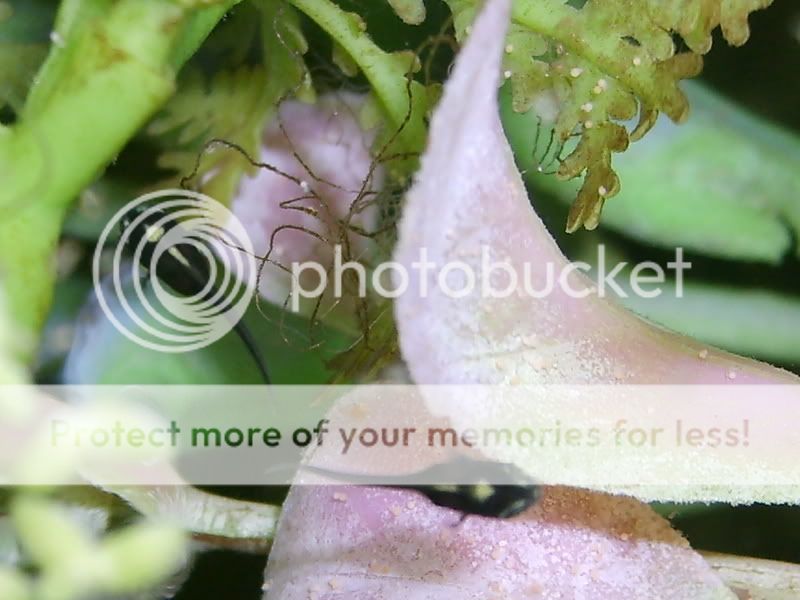
small second batch, fry don't touch the egg's
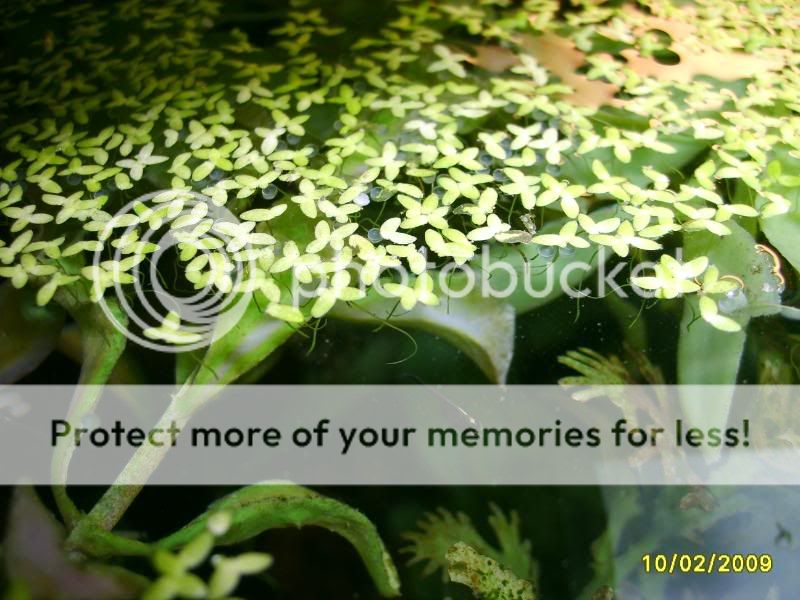
growing quick
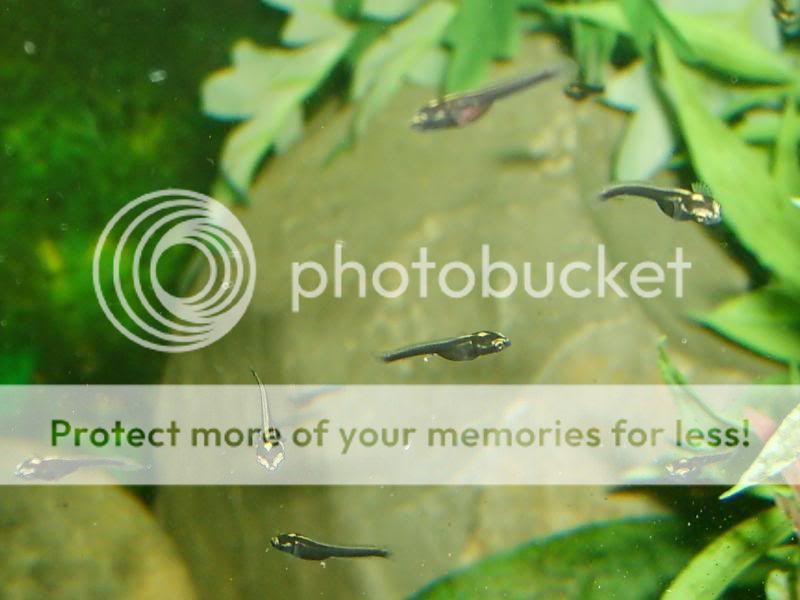


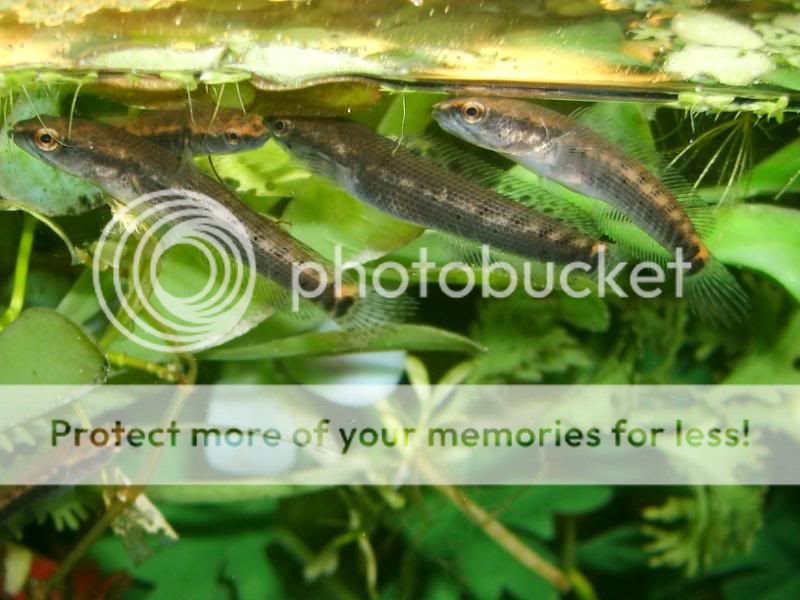
notice the date <see how quick these beauty's grow
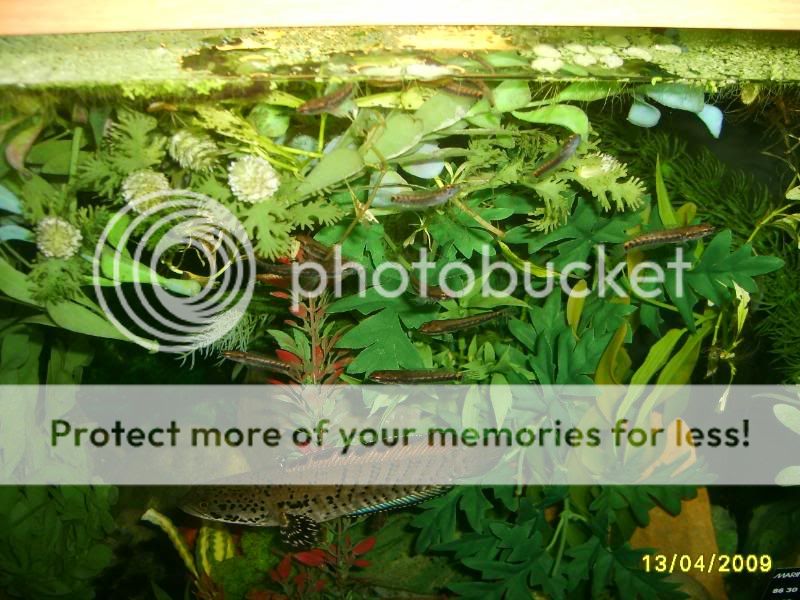
Scientific Name: Channa ornatipinnis
Family: Channidae
Origin: Southern Irrawaddy and Sitang River basins Myanmar
Maximum Size: 30cm/12inches....Reports of bigger have been heard
Care: Temperature: sub tropical around 18c-25c
Tank mate: Very aggresive, will not tolerate members of its own kind in small spaces , although a dwarf species requires a very large well structured tank to house a group which this way you will be virtually guaranteed a pair, as they start to mature they will go through a stage where lots of scraping very well may occur, once through this and a pair is formed, it's advisable to remove the rest before spawning occurs and deaths may well happen...
Feeding: I fed mine on dried mealworms and chopped prawns. They don't need live fish, and do perfectly well on robust live foods (earthworms, river shrimps, mealworms) or chunky frozen foods.
Sexing: Males have a much bulkier head and more stocky compared to female
Breeding: Set up a heavily planted tank with lots of bogwood/rocks for hiding places. In the wild they’re always found one ornatipinnis to one rock. Floating plant's recommended & I went for the cheap version<plastic>

Set tank up, if room temp iss warm there will be no need for a heater even in winter. Having a strong current is good. My Juwel filter is aimed at the floor via an angle so there's a current running through the tank but the surface is like a mill pond...once a pair has formed just leave them to get on with it. Do not change any water as these guys actually do not like lots of water changes. You should notice head to tail with fins exposed and sometimes they will wrap themselves up in funny situations, also performing what is known as "mock spawning". I call this the wrap and drop because they wrap into a ball up at the surface then drop as one towards the floor. If you see this you should be like this:

They lay the eggs whilst dropping towards the floor and the eggs will float to the suface where upon after the male will move the eggs into a "nest" where he will protect them even from the female. They are brilliant parents. My first spawn have sucsessfully been reared. He will take the eggs into his mouth and clean then spit them back to the group via his gills, <hatch in around two days>. He does this with them even when they’re free swimming. At this time both parents will protect the fry. Once free swimming, it's plain sailing from there. Feed with either fresh hatched brineshrimp eggs or a good thing I found on ebay "deshelled brineshrimp eggs". You just feed straight to them. Mine were solely fed on this.
CLICK ON PICTURE'S FOR BIGGER VERSION'S
The tank

The happy parent's at the time


The egg's in the nest

here notice the egg's floating around prior to collecting them up


after two day's....egg's with tail's

free swimming and eating

See the caring side of the ornatipinnis

fry with babie colour's black with a gremlin stripe across the top

small second batch, fry don't touch the egg's

growing quick





notice the date <see how quick these beauty's grow

